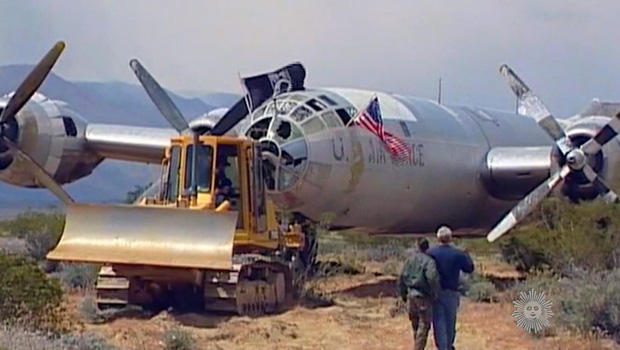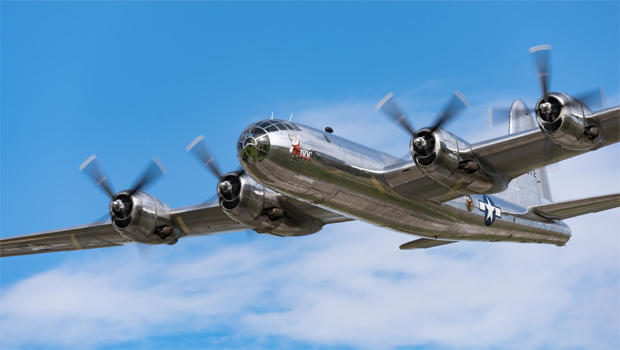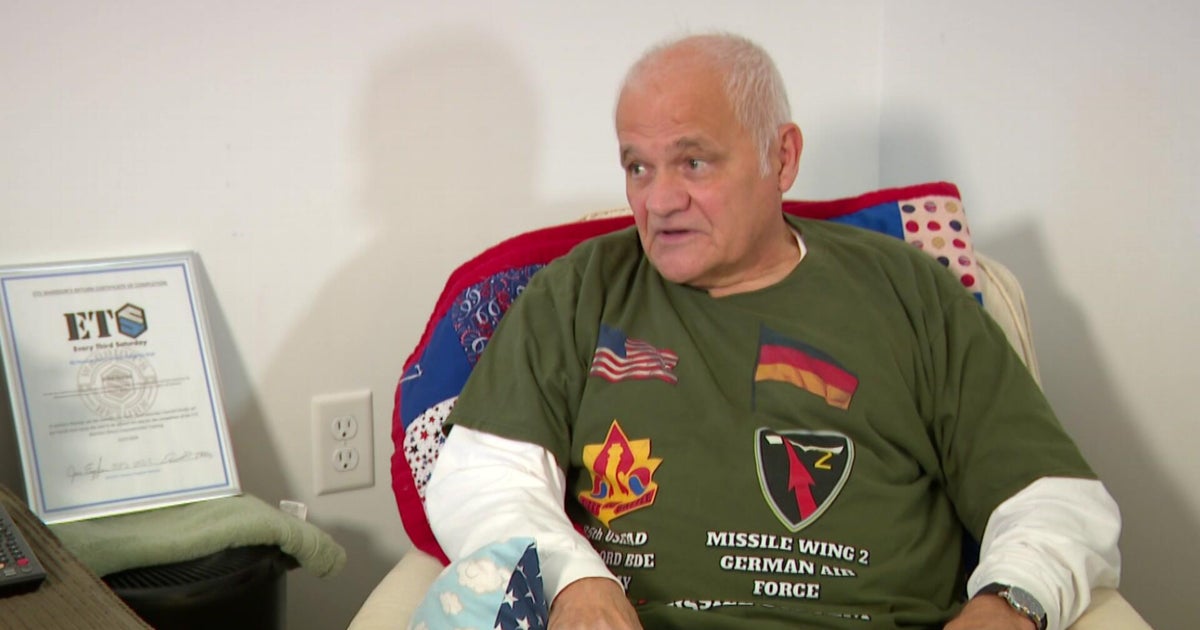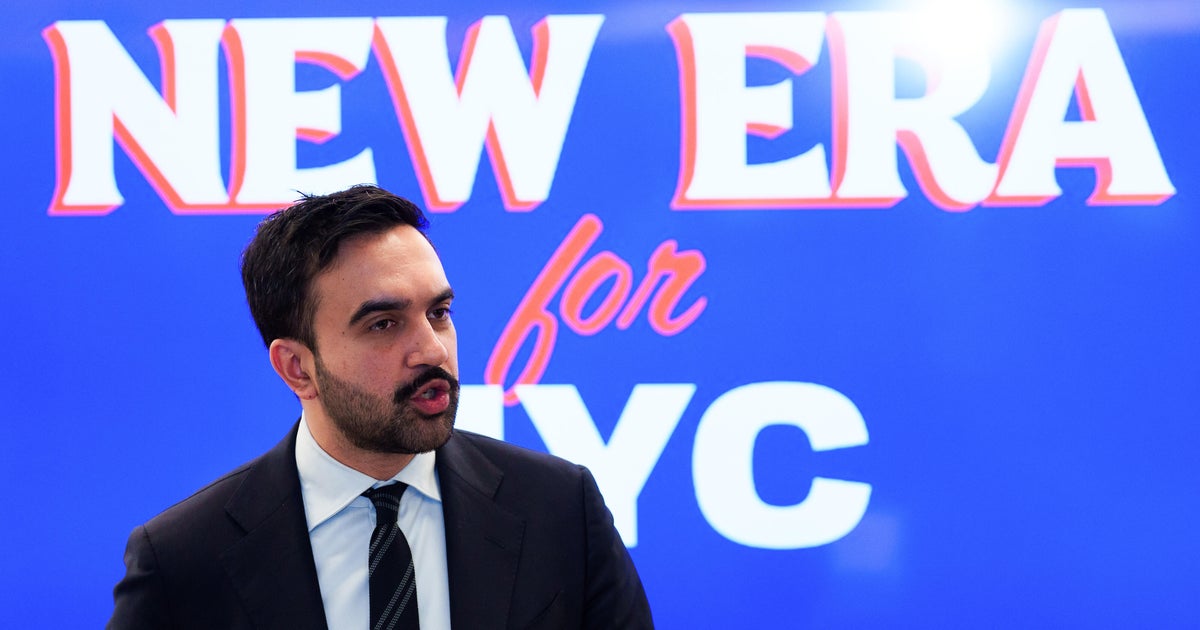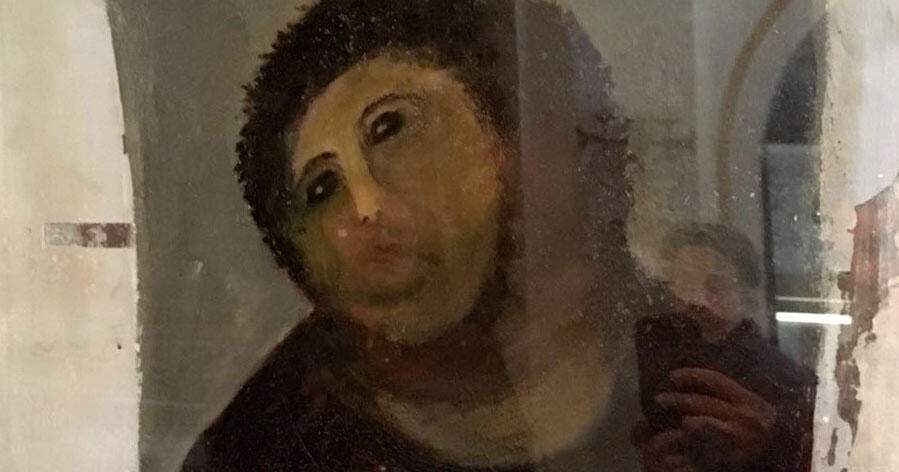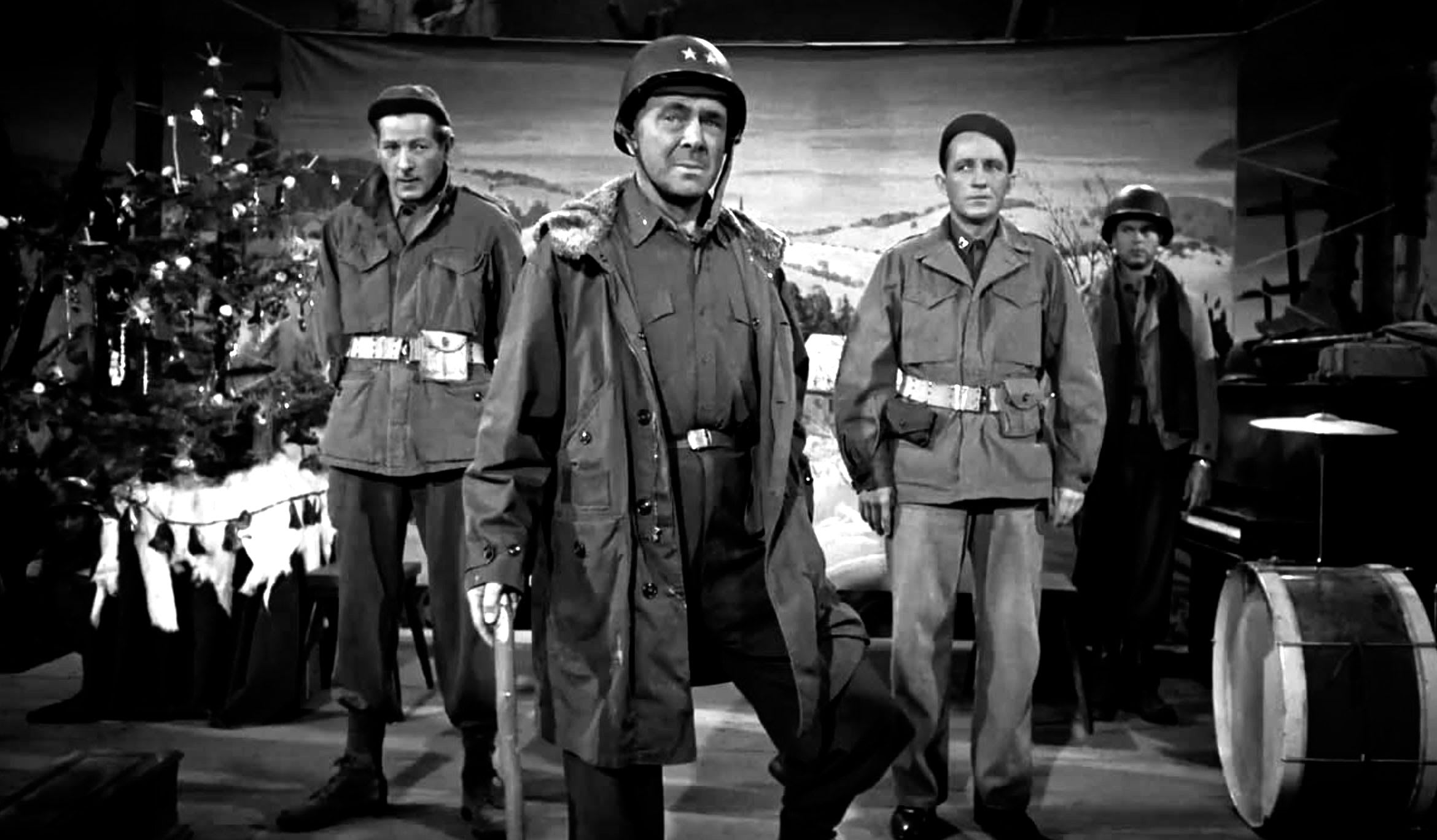Restoring a World War II aviation gem
A veteran of World War II is UP IN THE AIR once again, thanks, Lee Cowan tells us, to a small army of volunteers ... and one very determined Korean War vet:
There are men with big plans … and then there’s Tony Mazzolini, whose plan was so big it took up a hanger the size of a football field.
He showed Cowan the last restorable B-29 in the world -- a sleek silver ghost of World War II, a bomber that both haunted and obsessed Mazzolini for nearly three decades.
“It’s part of the Greatest Generation, and we want to keep the memories alive,” he said.
Nicknamed the “Superfortress,” the B-29 was the most technologically-advanced bomber in the world at the time – obliterating the enemy’s ability to make war.
The most famous, of course, was the Enola Gay, that dropped the first atomic bomb.
Mazzolini was a flight engineer on a B-29 during the Korean War. By then, the jet age had nearly rendered the legendary bomber obsolete. Those that hadn’t been lost in combat were usually scrapped, or sent to the China Lake Naval Weapons Center in California’s Mojave Desert, where the once-proud bombers were used for target practice.
“They were just in millions of pieces,” Mazzolini said.
“Kind of an undignified end,” said Cowan.
“It is, to quite a historic aircraft.”
Everyone told Mazzolini any B-29 worth saving had been saved already; there were none left.
But they were wrong.
Out in that desert boneyard he found a B-29 named “Doc” -- defiantly, inexplicably, still in one piece, as if it had never given up the will to fly. It had become, Mazzolini said, “a sanctuary for some of the desert birds and critters.”
With the help of a few dozen bomber buffs, Mazzolini managed to tug ol’ Doc out of the desert. Slowly, piece by giant piece, it was shipped back to the former Boeing plant in Wichita, Kansas -- the very same plant where Doc rolled off the assembly line back in 1945.
“My mother, father, grandmother all worked on ‘em; my mom started the day after she turned 16 years old,” said airplane mechanic T.J. Norman, one of a long line of B-29 mechanics. And Doc became his patient.
His job wasn’t just to make the plane a static display in a museum. Nope. What he had to do seemed impossible: To get Doc flying again.
Soon, volunteers started showing up to help Norman out. And they kept coming, by the hundreds.
Some older than Doc himself, like Connie Palocioz. “You know, it’s kind of hard to believe that I would be here,” said the 91-year-old, one of the original Rosie the Riveters who worked at the Wichita Boeing plant during World War II.
In fact, she put the rivets in Doc herself. They’re still as good as they day she put them there.
“Really proud of this plane. It means a lot to me,” she said.
Connie and the rest of the volunteers, known collectively as Doc’s Friends, spent hundreds of thousands of volunteer hours, not to mention hundreds of thousands of donated dollars, to get Doc ready for its hometown debut -- nearly 30 years after it was rescued.
Few were as awestruck as Army Corps veteran Charles Chauncey. He’s 92, and a former B-29 pilot. “I don’t know how many are left of us, but it’s getting pretty small,” he said.
He flew 35 missions over Japan.
Cowan asked, “What does it feel like when you’re in there and you start up all four of these engines?”
“Oh, noisy!” Chauncey laughed.
He wasn’t kidding; the Earth actually moves as they belch to life.
It was the day of Doc’s first test flight, and the air in Wichita was thick with nervous anticipation. Mazzolini, Chauncey, everybody was there -- Connie Palocioz, too, appropriately dressed as Rosie.
As Doc lumbered by, there were more than a few tears.
Mazzolini joined Palocioz at the end of the runway to wait and watch. It had been 60 years since that plane left the ground -- everything was on the line.
And then, it happened ...
“It’s up!! It’s up!!! All right!! It’s up, by God, it’s up!!”
That’s all Mazzolini could say.
There were cheers all around...
“I’m telling ya’, I am absolutely delighted at this,” he said. “This has been one great day. I couldn’t believe it. I feel like doing a dance right now!”
“It’s up by God it’s up!!”
Mazzolini had done it, and there it was: a B-29 back among clouds, a tangible piece of flying history.
But Mazzolini’s real gift was to veterans like Chauncey, who quietly, away from all the pomp and circumstance, said more than we ever could.
“Oh, it’s great. Ol’ Doc. Yeah!” Chauncey said, pumping his fist in the air.
For more info:
